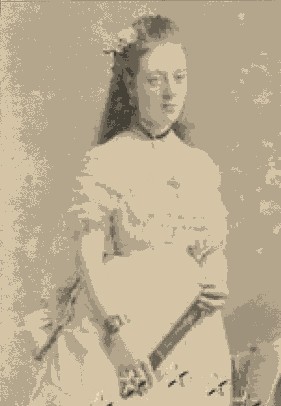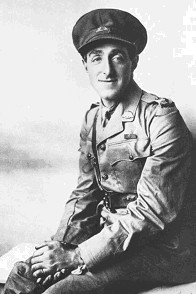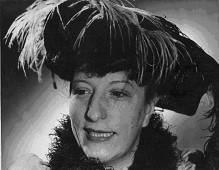|
| ||||
|
|
||||
|
|
Silversmiths & Jewellers,
Watch & Clock Makers,
|
The 1830 Pigot’s Directory shows Bright and Kyezor again as the only silversmiths and jewelers in the town: Louis is never mentioned as a Watchmaker.
By 1834 Louis is out of the Pigot’s Directory. Philip Bright is still there and once again listed as a watch and clock maker as well as a silversmith and jeweller.
|
Silversmiths & Jewellers,
Watch & Clock Makers,
|
Oxford historian and author Harold Pollins and Whitton historian Vic Rosewarne researched Louis for their book Louis Kyezor “The King of Whitton”. Of Louis’ years in Doncaster they wrote:
‘In a letter to the Jewish Chronicle in 1858 he (Louis) stated that when he lived in Doncaster he was a ‘town constable’ for some years. He was taking part in a correspondence about Jewish hawkers and the fact that some did not have licenses to practice their trade. Kyezor explained that there used to be 10-12 Jews coming to Doncaster and he never knew any hawker taken up for a misdemeanour. However he had been called upon to mediate with the magistrates to get these poor unfortunate foreigners out of trouble for hawking without a licence. Typically, his letter expressed his self-praising self-importance.
‘Doncaster does not normally figure in the early nineteenth century history of Jewish settlement in Britain but it is not altogether surprising that he should live in a town without an organized Jewish community. Jews, it is true, tend to congregate together but often one can find just one or two families or individuals as the only Jews in a particular town or even village. Sometimes they might have kin a nearby town: thus at least one other Jew, Philip Bright was in Doncaster at the same time as Kyezor. He was a watchmaker and jeweller, part of a Sheffield Jewish family.’
Harold Pollins found advertisements in a Doncaster newspaper of 1830 showing he was also selling cloth as a sideline and his shop was opposite ‘the news room’.
Doncaster Gazette 9 July 1830 page 2 column 1
‘To The Public in
General
L. Kyezor will offer on Tuesday, the 13th of July for sale, the remaining part
of the stock of beautiful cloth, that is left from the last sale by auction at
the Old Betting Rooms in French Gate and at the same time Louis Kyezor begs to
return his sincere thanks to his friends for the very great encouragement he has
received since he commenced in the above line and assured them that the cloth
already offered for sale belongs to a person who is declining business and will
be sold without the least reserve. N.B. Those who cannot attend the sale may be
served with the cloth, at the price sold by auction at Mr. L. Kyezors.'
Doncaster Gazette 20 August 1830.
'The home of Mr Kyezor opposite the News room was the target of attack. Had the thieves not been observed Mr Kyezor’s shop would have been cleared within a few minutes'.
The Times 7 November, 1831 had a page five story reprinted from the Leeds Mercury that referred to Louis in Doncaster in association with the Reform Bill debate.
It appears there was a political dispute between the Sheffield and Doncaster branches of the South West Yorkshire Yeomanry Cavalry and their Colonel, Lord Wharncliffe. The volunteers favoured reform whilst their commanding officer did not.
In 1830 the Duke of Wellington had been forced to resign as England’s Parliamentary leader because of his opposition to the Reform Bill that was designed to give the vote to more people and better representation to new industrial towns. Earl Grey was asked to form a government and he picked a ministry pledged to introduce a Reform Bill. His proposed bill passed the House of Commons but was defeated in the House of Lords, then dominated by the Tories and led by the Duke of Wellington. The Unions mounted a huge campaign to demand the passing of the legislation and that resulted in riots in Derby Nottingham, London and Bristol.
And so the debate came to Doncaster. It would appear that the 33 members of the local Doncaster Troop, had signed a “Round Robin’ (a form of petition where signatures are signed in a circle so no one knows the originator or first person to sign) expressing their opinions, asking for the dismissal of their leader, who was against reform, or they would resign: twenty three men then handed in their resignations. Louis was one of them. The Sheffield members were horrified that the Doncaster branch had gone so far and publicly apologised to their Colonel.
At a Town Hall meeting in Doncaster, addressed by Lord Wharncliffe, who was met with a ‘volley of hisses and groans’, Louis was questioned about the affair and it is the first reference of many that he was an entertaining speaker and orator.
The paper reported:
‘Lord Wharnclife said if the whole troop had signed [the Round Robin], they would have been dismissed with disgrace, but as only part of them had signed, they might resign, as he did not wish any person to be in his regiment who had not confidence in the commander. He should send for their arms and accoutrements to-morrow morning.
‘The 35 year-old Louis Kyezor explained that he was a member of the Second Doncaster Troop and that Mr. Torr (the local chemist) had asked him if he would sign. The Times quoted his exchange with Wharncliffe as follows:
‘Mr. Kyezor - ‘I said I was a rank reformer – that the King was a reformer – that reform was all the go and requisite (cheers and laughter) – and I hope all in this place are true reformers’ (Loud cheers.)
‘Lord Wharncliffe – I beg your pardon, but I am not come here to discuss the question of reform.
‘Mr. Kyezor
– I do not want to discuss it in any other way but to give my ideas upon it.
(Laughter and cries of ‘at him again, Kyezor.’)
‘Lord Wharncliffe
– I don’t want your ideas. (Loud laughter)
‘Mr. Kyezor – I should be a natural fool if I signed a Round Robin, without knowing its contents, and my idea was that the King called for reform from principle. (Cheers and laughter) I showed it to the men, and 23 signed it. We had a field day, our captain at our head. (Laughter.) He knew something of a Round Robin going round, it did go round (laughter), and the captain told the men the consequence and the fact was, they ‘funk’d’ to a man (Continued laughter.)’
The act was passed in 1832.
We know Louis left Doncaster early 1834 as he turns up in London in July 1834 appearing as a witness in an Old Bailey trial. He was then living at 16 Tottenham-court-road.
A single fusee
bracket clock c1840 by Louis Kyezor sold this century in London.
On the face are the words: L. Kyezor, 16 Tottenham Court Road. London. Photo
courtesy of Jenny Bywater
Some of Louis Kyezor’s more interesting descendants
Many of Louis Kyezor Snr’s direct descendants have been high achievers. Two of them are known to have inherited his gift of speaking to the public. His great great great great granddaughter Katherine Cummins represented Australia twice in international debating competitions in Scotland and America and, at the age of 16, her sister Julia Cummins was invited to make the welcoming speech to Prince Andrew and the Duchess of York when they arrived in Sydney in 1988.
Three of Louis’ direct descendants are known to have achieved international fame in their lifetime:
SOPHIA FLORA HEILBRON
Granddaughter Sophia Flora Heilbron, the pianist and composer, played before Kings, Queens, Emperors and Princes, members of the European and British aristocracy, and Prime Ministers and Presidents on both sides of the Atlantic in the 1860s and early 1870s.
She played for Rossini in his own home in Paris and one of her many compositions was dedicated to Julia Dent, the wife of American President Ulysses S. Grant.
LEONARD KEYZOR VC
Leonard Keysor VC London, c1916.
Son of Benjamin
Kyezor/Keyzor and Julia Benjamin
In one of the bravest and most sustained acts of bravery in World War 1, Louis’ great grandson Leonard Maurice Keyzor, fighting with the First Battalion of the Australian Infantry, was awarded the Victoria Cross at Lone Pine, Gallipoli and helped forge the legend of the Anzacs. He changed his name to Keysor on returning to England.
RITA WEBB
Rita Webb, actress
and comedienne.
Photo courtesy of Gel Lewis, nee Webb.
Great granddaughter Rita Webb became a character actress and Comedienne, constantly seen on film and television screens from 1950 to 1980 with repeats still being shown today in the 21st Century. She appeared with such luminaries as film greats as Garry Cooper, Peter Sellars and Sidney Poitier, and television stars like Spike Milligan, Benny Hill and Frankie Howerd. She even appeared in a film with Ringo Starr of The Beatles, and was directed by Alfred Hitchcock in his film Frenzy and Blake Edwards in The Revenge of The Pink Panther.
Researched and written in 2005 by Keira Quinn Lockyer
Hepburn Springs, Victoria, Australia
References:
-
Louis Kyezor “The King of Whitton” by Harold Pollins and Vic Rosewarne, Borough of Twickenham Local History Society, November 2002. ISBN 0 – 903341 –75-1.
-
Leonard Keyzor VC – The Quiet Hero, by Keira Quinn Lockyer Australian Jewish Historical Society Journal Sydney, June 2005,Vol XVll Part 4 Pg 544-565 .
-
Correspondence between Harold Pollins and the author 2000-2005.
-
English census papers 1841-1901.
-
Birth, death and marriage certificates England and Australia.
-
Gravestone inscriptions.
-
Will of Louis Kyezor.
-
Pigot’s Doncaster Directory lists 1829. 1830 and 1834.
-
Items from The Times on-line through the State Library of Victoria.
-
Items from The Jewish Chronicle as transposed by Doreen Berger, Jeffrey Maynard and Harold Pollins.
-
Items from Doncaster newspapers as transposed by Harold Pollins.
-
Research on Rita Webb by Aaron Smith of London.
End note:
For a more detailed look at
the life of Louis there is the book by Harold Pollins and Vic Rosewarne: Louis
Kyezor “The King of Whitton” Borough of Twickenham Local History Society,
November 2002 ISBN 0-903341-75-1 available from the Twickenham Local History
Society, 75 Radnor Road, Twickenham TW4NB. The price was £4.50 in 2002.
Back to
Doncaster Congregation Home Page
Page created: 4 January 2006
Page most recently amended: 30 May 2023






